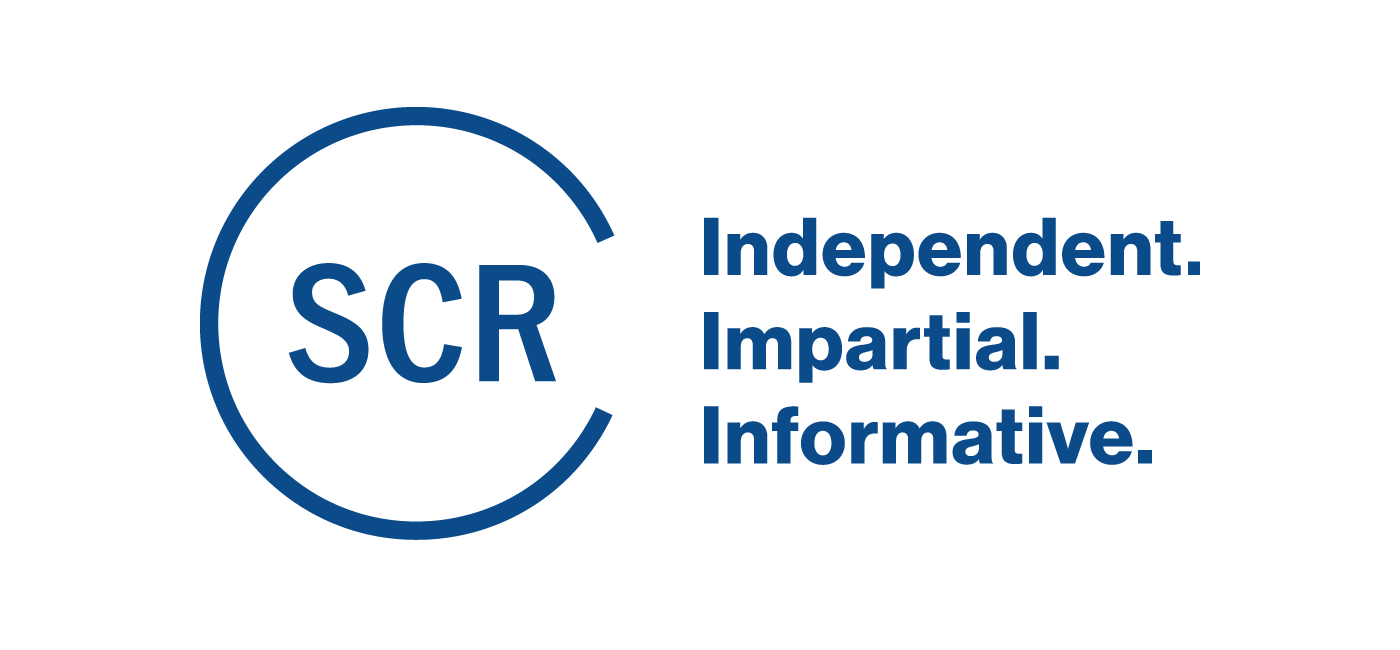December 23, 2025
The Washington Capitals, the National Hockey League affiliate of the Hershey Bears, have re-assigned forward Graeme Clarke to the Canadian National Team for the 2025 Spengler Cup.
Clarke, 24, has skated in 25 games…
The Washington Capitals, the National Hockey League affiliate of the Hershey Bears, have re-assigned forward Graeme Clarke to the Canadian National Team for the 2025 Spengler Cup.
Clarke, 24, has skated in 25 games…

The Libyan army’s chief of staff, Mohammed Ali Ahmed al-Haddad, has been killed in a plane crash after leaving Turkey’s capital, Ankara.
The prime minister of Libya’s internationally recognised government confirmed on Tuesday evening that…
On December 12, 2025, the U.S. Department of the Treasury (Treasury) and the Internal Revenue Service (IRS) released packages of proposed regulations (2025 Proposed Regulations) and final and temporary regulations (Final Regulations) under section 892,1 which exempts from tax the income of foreign governments from certain U.S. investments. These rules are particularly relevant to sovereign wealth funds and asset managers with which they invest.
Background: Foreign Governments and Section 892
Section 892 generally exempts from U.S. federal income tax the income of foreign governments derived from investments in the United States in stocks, bonds, or other domestic securities, financial instruments held in the execution of governmental financial or monetary policy, and bank deposits. However, the exemption does not apply to income that is (1) derived from the conduct of any commercial activity (whether within or outside the United States), (2) received by, or directly or indirectly from, a controlled commercial entity (CCE) or (3) derived from the disposition of an interest in a CCE. An entity generally is a CCE for these purposes if it is engaged in commercial activities anywhere in the world and the foreign government holds (directly or indirectly) any interest in the entity that constitutes 50% or more (by vote or value) of the total interests in the entity or that provides the foreign government with “effective control” of the entity.
2025 Proposed Regulations
The 2025 Proposed Regulations address primarily two topics: (i) whether the acquisition of debt is considered an investment or a commercial activity and (ii) when a foreign government will be considered to have effective “control” over an entity. The regulations are proposed to apply to taxable years beginning on or after the date final regulations are published.
Acquisition of Certain Debt as “Commercial Activity”
Prior proposed Treasury regulations published on November 3, 2011 (2011 Proposed Regulations) generally treated loans and investments in stocks, bonds, and other securities as not constituting commercial activity for section 892 purposes, but treated investments (including loans) made by a banking, financing, or similar business as commercial activity. The 2025 Proposed Regulations would instead set out a new framework for determining when the acquisition of debt, including at original issuance, qualifies as an investment and not commercial activity for purposes of section 892.
Under the new framework, any acquisition of debt (meaning any obligation treated as debt for U.S. federal tax purposes) is treated as a commercial activity unless the acquisition is treated as an “investment” under (1) a safe harbor for registered offerings, (2) a safe harbor for qualified secondary market acquisitions, or (3) a facts-and-circumstances analysis. This rule applies regardless of whether the activity is considered a trade or business under other provisions of the Code, such as sections 162, 166, or 864(b).
Safe Harbor 1: Securities Act registered offerings
A debt acquisition would be treated as an “investment” (and therefore not commercial) if it involves an acquisition of bonds or other debt securities in an offering registered under the Securities Act of 1933, provided the underwriters are not related to the acquirer under sections 267(b) and 707(b). Treasury and the IRS specifically request input on whether, and under what circumstances, this safe harbor should extend to offerings registered under foreign securities laws that provide a sufficiently similar regulatory framework.
Safe Harbor 2: Qualified secondary market acquisitions
A qualified secondary market acquisition would be treated as an “investment” if:
Facts-and-circumstances test
If neither safe harbor applies, a debt acquisition may still be treated as an investment based on all relevant facts and circumstances. The preamble to the 2025 Proposed Regulations states that facts and circumstances are relevant to the extent they indicate that the entity’s expected return from acquiring the debt is exclusively a return on its capital, rather than including a return on activities it conducts. The 2025 Proposed Regulations set out the following non-exclusive list of factors to be considered, but the preamble notes that the weight given to each relevant factor (and any other factors) may vary from case to case:
Illustrative examples in the 2025 Proposed Regulations
The 2025 Proposed Regulations include examples that provide insight into how Treasury and the IRS expect the facts-and-circumstances test to apply to a controlled entity of a foreign government. The examples address:
“Effective Control” for CCE status
The 2025 Proposed Regulations generally would provide that a foreign government has effective control over an entity where it has any “interest” that, directly or indirectly and separately or in combination with other interests, results in control over the entity’s operational decisions, managerial decisions, board-level decisions, or investor-level decisions. Mere consultation rights would not alone give rise to effective control. The “interests” considered include any debt or equity interests, voting rights, director appointment rights, veto rights, contractual rights or arrangements with the entity or its other interest holders, business relationships with the entity or its other interest holders, regulatory authority, and any other interest in or relationship with the entity that may provide influence over the foregoing decisions. All of the facts and circumstances related to the interests would be considered in determining effective control. In all events, however, a foreign government would be considered to have effective control of an entity if it is, or controls an entity that is, the managing partner or managing member of the entity (or holds an equivalent role under local law).
The 2025 Proposed Regulations include several examples illustrating when a foreign government’s interests in an entity do or do not create effective control.
Treasury and the IRS request comments on how to treat situations where minority investors have rights shared with others (e.g., supermajority or consent structures) and whether such rights should (or should not) result in effective control or 50% voting power.
Practical Implications
Private credit investments – commercial activity. Foreign government investors should review current structures and practices for acquisitions of debt instruments in entities that are intended not to be engaged in commercial activity to confirm whether the safe harbors described above are met or whether the debt acquisitions are properly viewed as investments under the facts and circumstances analysis.
Minority positions in entities engaged in commercial activity. Foreign government investors should review any non-passive rights they hold (e.g., board appointment provisions, veto rights, consent rights, creditor rights) in entities generating income that is expected to be exempt from tax under section 892.
Final Regulations
The Final Regulations finalize, with certain revisions, proposed Treasury regulations, published on November 3, 2011 (2011 Proposed Regulations) and on December 29, 2022 (2022 Proposed Regulations) that address (i) when a foreign government is engaged in “commercial activities” and (ii) when an entity is a CCE of a foreign government. Generally, the Final Regulations apply to taxable years beginning on or after December 15, 2025. However, taxpayers may elect to apply the Final Regulations to earlier open taxable years, provided they and their related parties consistently apply the final rules in their entirety to that year and all succeeding pre-finalization years.
Commercial Activities
Definition of commercial activities
Under the Final Regulations, the term “commercial activities” retains the historically broad definition: any activity ordinarily conducted for the current or future production of income or gain, and is expressly broader than the “trade or business” standards under section 162 or section 864(b). In particular: (i) every activity that constitutes a trade or business for purposes of section 162 or a trade or business in the United States for purposes of section 864(b) is a commercial activity, unless specifically excepted (e.g., through exceptions for investments and trading); (ii) non–trade-or-business activities may still be commercial depending on their nature; and (iii) the Final Regulations reject any argument that investment purpose or governmental policy motivation can shield an activity from being treated as commercial.
Financial instruments
The Final Regulations retain the concept that investing and trading in “financial instruments” for one’s own account as a non-dealer falls within the investment and trading exceptions and thus does not constitute commercial activity. Further, they expand the definition of “financial instrument” to broadly include any interest rate, currency, equity, or commodity notional principal contract and any evidence of an interest in options/forwards/futures and similar contracts the value of which is determined by reference to one or more of any such notional principal contract, stock, debt, publicly traded partnership interest, commodity or currency. Accordingly, it is now clear that investments in such derivatives do not present the risk of commercial activity. However, the preamble confirms that if a financial instrument is treated as beneficial ownership of a reference asset under general U.S. federal income tax principles, the determination of whether a transaction in the financial instrument constitutes commercial activity is based on the reference asset, not the financial instrument.
Certain fee income
Treasury and the IRS rejected a request to include an exception from commercial activity for the receipt of certain fee income as a passive investor in a private equity or private credit fund (e.g., fees for services performed by the sponsor or fees incidental to the providing of capital). Treasury and the IRS asserted that the determination of whether the receipt of such fees give rise to commercial activities is based on the substance of a transaction, rather than its label or form.
Controlled Commercial Entities
U.S. real property holding corporations and U.S. real property interests
Temporary regulations issued in 1988 have long provided that a corporation, domestic or foreign, that is a United States real property holding corporation (USRPHC) is per se treated as engaged in commercial activity and thus not entitled to benefits under section 892. This rule required controlled entities of foreign governments to continuously monitor and carefully structure their direct and indirect investments in U.S. real estate to ensure they would not lose their entitlement to section 892 benefits.
The Final Regulations limit this rule to domestic corporations that are USRPHCs. Accordingly, foreign governments will no longer have the burden of monitoring and structuring to avoid their non-U.S. controlled entities becoming USRPHCs. The Final Regulations also finalize with clarifications a rule introduced in the 2022 Proposed Regulations that treats a corporation as not a USRPHC for these purposes if it is a USRPHC solely by reason of its direct or indirect ownership interests in noncontrolled USRPHCs.
Annual CCE determination
The Final Regulations generally adopt rules from the 2011 Proposed Regulations providing that an entity controlled by a foreign government is a CCE if it engages in commercial activity at any time during its taxable year. However, to prevent abuse where a commercial transaction is split across years, the Final Regulations require that activities in the immediately preceding taxable year be considered to the extent relevant in characterizing the current year’s activities.
In addition, for corporate transactions where the tax attributes of assets carry over from a transferring corporation to an acquiring corporation under section 381, the acquiring corporation is not generally treated as engaging in the transferor’s commercial activity in the acquisition year, provided that the transferor’s taxable year ends and the acquiring corporation does not directly continue the commercial activity. However, if the acquisition is between commonly controlled entities (e.g., a section 332 liquidation within the same foreign sovereign’s group), the acquirer is treated as engaged in commercial activity for its taxable year of the acquisition.
The Final Regulations do not address whether an entity that is 50% or more owned by a foreign government for only part of a taxable year is treated as a CCE for the entire taxable year.
Inadvertent commercial activity
The Final Regulations adopt and refine with minor revisions the inadvertent commercial activity exception in the 2011 Proposed Regulations pursuant to which a controlled entity is not treated as engaged in commercial activity if: (1) the failure to avoid the activity is reasonable; (2) the activity is promptly cured (within 180 days as opposed to 120 days under the 2011 Proposed Regulations); and (3) certain recordkeeping requirements are satisfied. Income from the inadvertent activity itself remains taxable.
The Final Regulations also adopt a safe harbor pursuant to which a failure to avoid commercial activities will be deemed reasonable if an entity’s assets and income from inadvertent commercial activity are less than 5% of the total assets and income of the entity (per applicable financial statements or adequate books), and written policies and procedures are in place to monitor the entity’s worldwide activities.
Qualified partnership interest exception
The 2011 Proposed Regulations included a “limited partner” exception that prevented the commercial activity of an entity treated as a partnership for U.S. federal tax purposes from being attributed to its limited partners. The Final Regulations rename, reformulate, and finalize the limited partner exception as the “qualified partnership interest” (QPI) exception.
A partner holding a QPI is not treated as engaging in commercial activity solely due to the partnership’s activities, but its distributive share of commercial activity income remains taxable.
In order to be treated as a QPI, the holder of the interest must not:
The Final Regulations also add a safe harbor for de minimis QPIs. A partner is automatically treated as holding a QPI if it:
The Final Regulations further clarify the application of the QPI exception to tiered partnerships. An upper-tier partnership that holds a QPI in a lower-tier partnership is not attributed the lower-tier partnership’s commercial activities. If, however, the upper-tier partnership’s interest in a lower-tier partnership is not a QPI, the lower-tier partnership’s commercial activity will be attributed to the upper-tier partnership and could, in turn, be further attributed to a foreign government investor holding an interest in the upper-tier partnership unless the investor holds a QPI in the upper-tier partnership.
The Final Regulations also provide rules for the aggregation of multiple interests. All interests held in a partnership by or through integral parts or controlled entities of the same foreign sovereign are aggregated for purposes of applying the QPI exception. If the aggregated interest fails to meet the QPI requirements, none of the interests qualify.
Practical Implications
Real estate investments. Foreign government investors no longer need to monitor the real estate holdings of their foreign controlled entities to ensure that they are not treated as USRPHCs and thus CCEs.
Investing in partnerships. Foreign government investors may consider whether their current and future investments qualify for the QPI exception, and in particular, the new safe harbor for de minimis QPIs, in order to protect their controlled entities from being treated as CCEs.
1 All “section” references herein are to the Internal Revenue Code of 1986 (the Code).

SAN FRANCISCO (KGO) — If you were around for it, the 1970s in San Francisco were a wild time. Entrenched in the terror of the Zodiac and Zebra killings, San Franciscans endured the tragedy of the Jonestown Massacre and the assassinations of…

Published 12:30 pm Tuesday, December 23, 2025
Two local…

Bowling is one of those sports that anyone can play and have fun with, but only a few will have what it takes to master it. PBA Pro Bowling 2026 is no different. Whether you’re a dedicated bowling fan wanting to play the most realistic…

On Monday (29 December), the Security Council is expected to vote on a draft resolution extending the mandate of the Counter-Terrorism…

Decades before Beyoncé’s “Cowboy Carter” dominated the charts, another Black woman from Texas transcended genres with her hit country songs.
Her name was Esther Phillips, and she was best known for…

DALLAS, Dec. 23, 2025 — Heart disease and stroke claim more lives in the United States than all cancers and chronic lower respiratory diseases combined, affecting nearly half of all U.S. adults. The American Heart Association is…